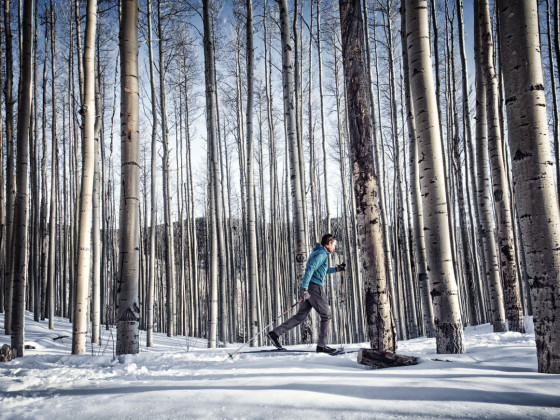DOWNHILL SKIING and snowboarding are tons of fun, no doubt about it. But there’s more to winter than buying a lift ticket and being chairlifted over snowy slopes. For a broader adventure offering this winter, check out these ideas for getting outdoors. BONUS: You can do them all in New Mexico.
1. Experience the power of a winter bird colony.
https://youtu.be/drDUxF9FsW0?list=PLBulHKwa2OWd2xAmveTL2glGSwiK_zWSZ
Each evening at dusk between mid-November and March, thousands of geese and hundreds of sandhill cranes return to central New Mexico’s Bosque del Apache National Wildlife Refuge from feeding in the fields to the north. They all come at the same time. The winged thunder is tremendous. The sky is dark with birds. The whole spectacle lasts just five to ten minutes. Without a doubt, it’s one of the coolest winter experiences in the Southwest.
The refuge hosts hundreds of other birds through the winter, including bald eagles, hawks, herons, grebes, and coots, along with an impressive array of mammals. The November Festival of the Cranes celebrates the return of these magnificent and endangered birds.
2. Get into the wilderness via snowshoe.
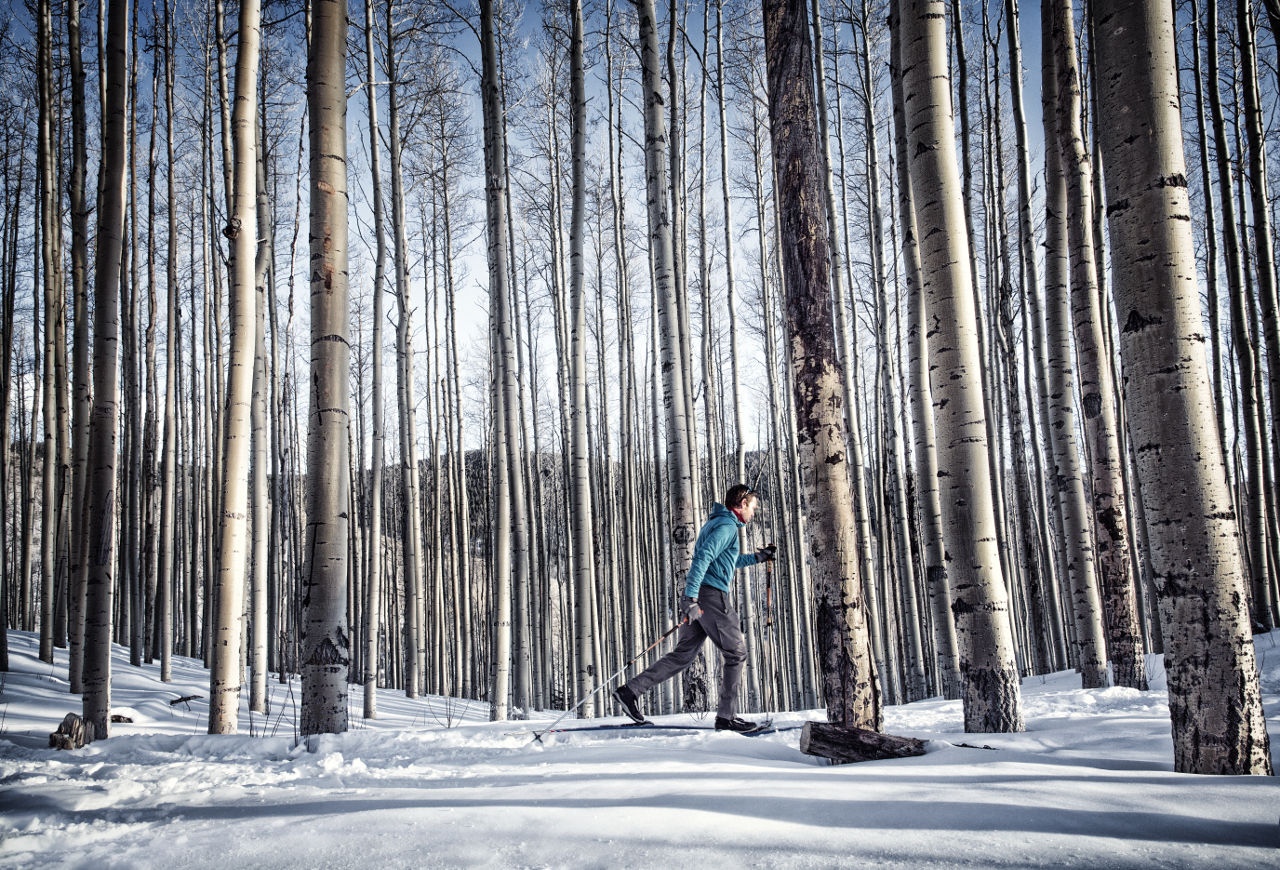
Photo courtesy of New Mexico Tourism
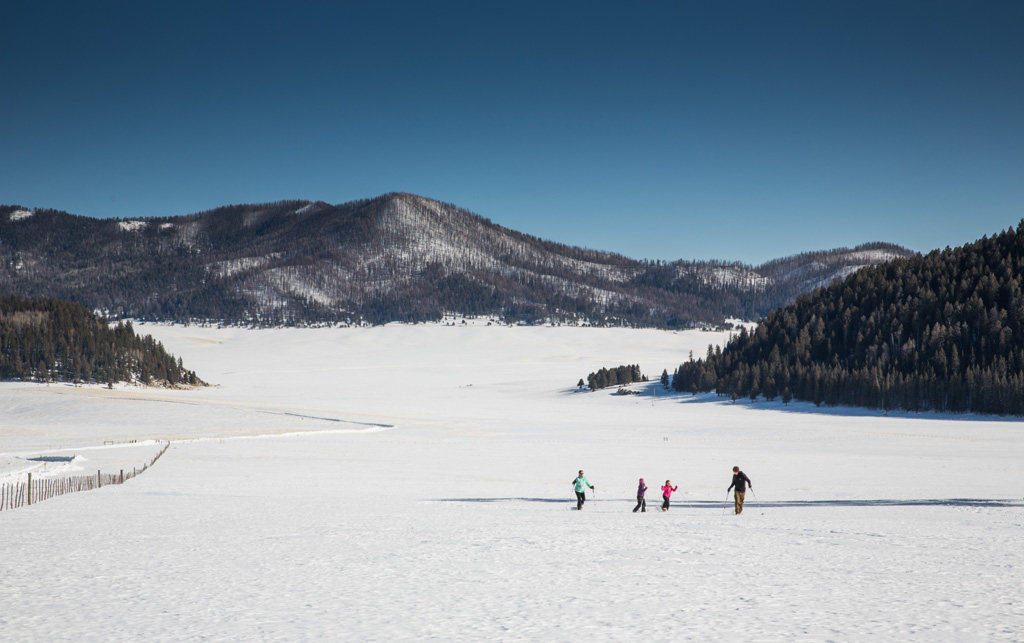
Photo courtesy of New Mexico Tourism
New Mexico’s backcountry makes for epic exploration, even (or especially) in the middle of winter. And the only way into its magnificent wilderness areas when the snow is several feet deep is on snowshoes. (If you need gear and maps, Taos Snowshoe Adventures is a good outfitter to set you up.)
Santa Fe, Sandia Crest, Chama, the Valles Caldera — they all sport some outstanding snowshoeing opportunities. Perhaps the best place to test your winter stamina, however, is the San Pedro Parks Wilderness, northwest of Los Alamos. And if you’re looking for an overnight option, consider renting a yurt for a night or two up in the high reaches of Taos Ski Valley or over in the canyons near Red River. (Check out the Enchanted Forest’s yurt reservation system.)
3. Soak in a hot spring.
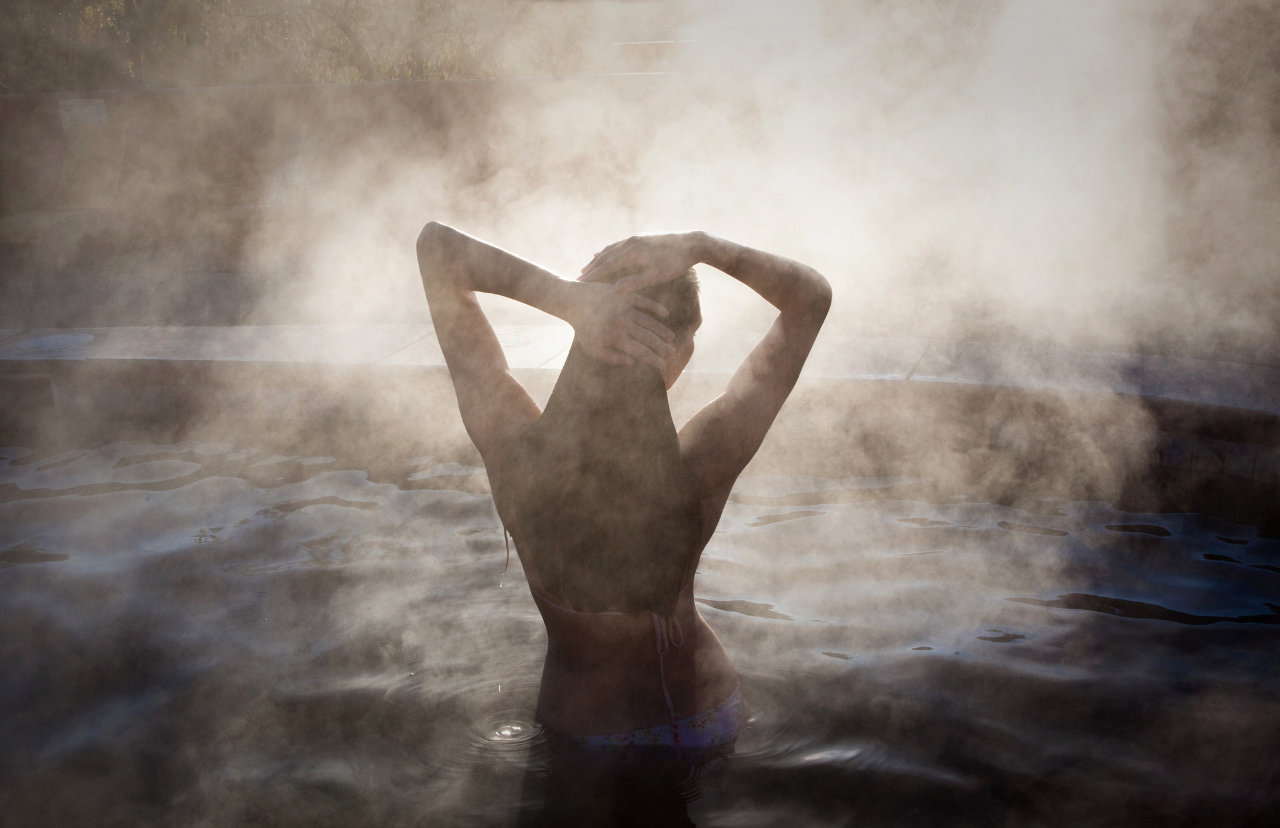
Photo courtesy of New Mexico Tourism

Photo courtesy of New Mexico Tourism
New Mexico is crowded with natural hot springs, and quite a number of them have been developed into relaxing resorts — try the laid-back Blackstone Hot Springs, the 150-year-old Gigglng Springs in the Jemez Mountains, or the luxurious Ojo Caliente Mineral Springs Resort & Spa.
Of course, many more are still completely undeveloped, tucked alongside creeks and rivers. The easy-to-access, but often totally empty, Spence Hot Springs in the Jemez Mountains is a great option. Melanie Hot Springs in the Gila Wilderness provides a steamy 90°F soak, and the Black Rock Hot Springs north of Taos are on the west bank of the Rio Grande with spectacular views of the surrounding canyon.
4. Take part in tribal feast days.
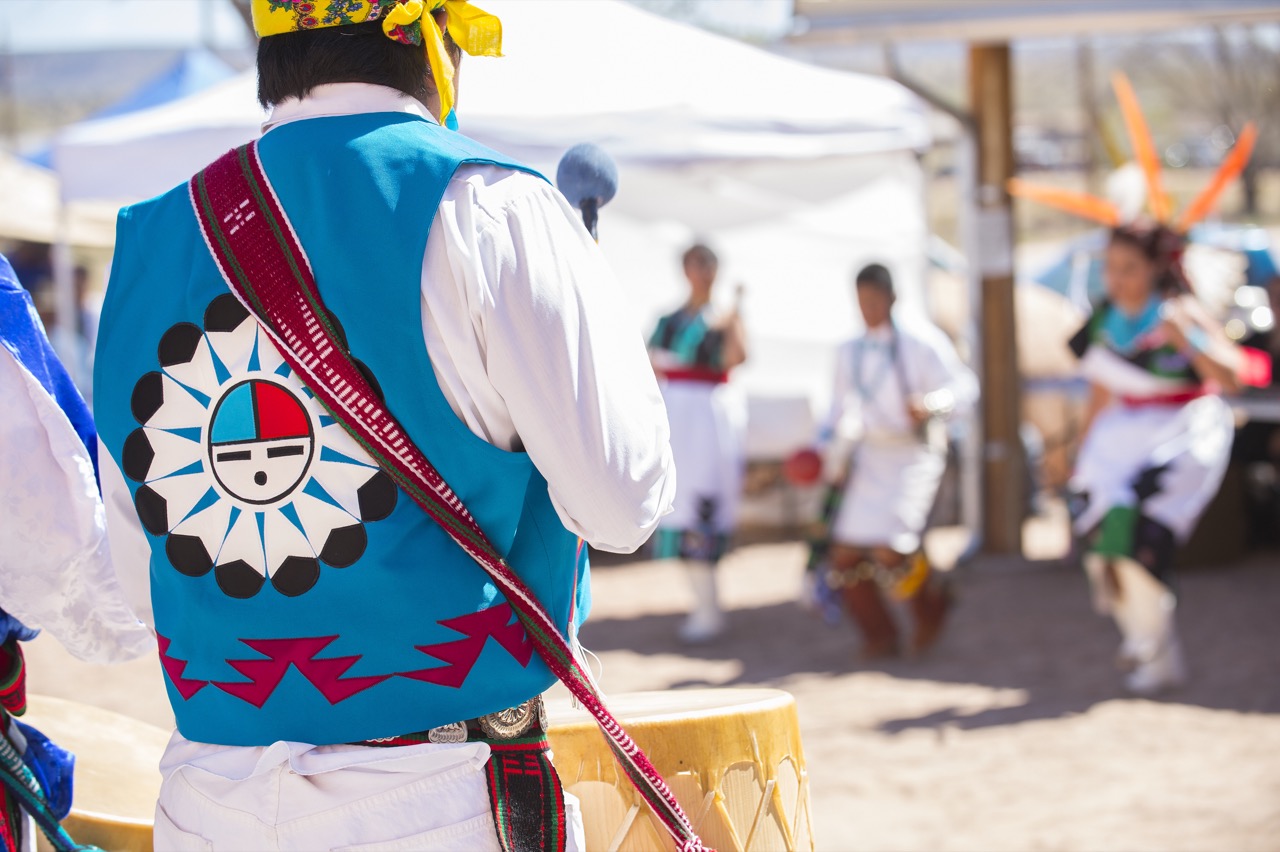
Photo courtesy of New Mexico Tourism
Winter is the time for many of New Mexico’s 19 Native American Pueblos to hold their annual feast days. These gatherings are a celebratory mix of indigenous religion and Spanish colonial customs intended to strengthen connections to place, language, and spiritual traditions. They’re generally open to the public and involve dances and the sharing of traditional meals like posole, calabacitas, fry bread, and carne adobado with visitors.
Times and dates — as well as access — are subject to change. Check with the tribal offices before going, and practice your best and most respectful behavior while you’re there.
5. See a different kind of snow-white landscape.
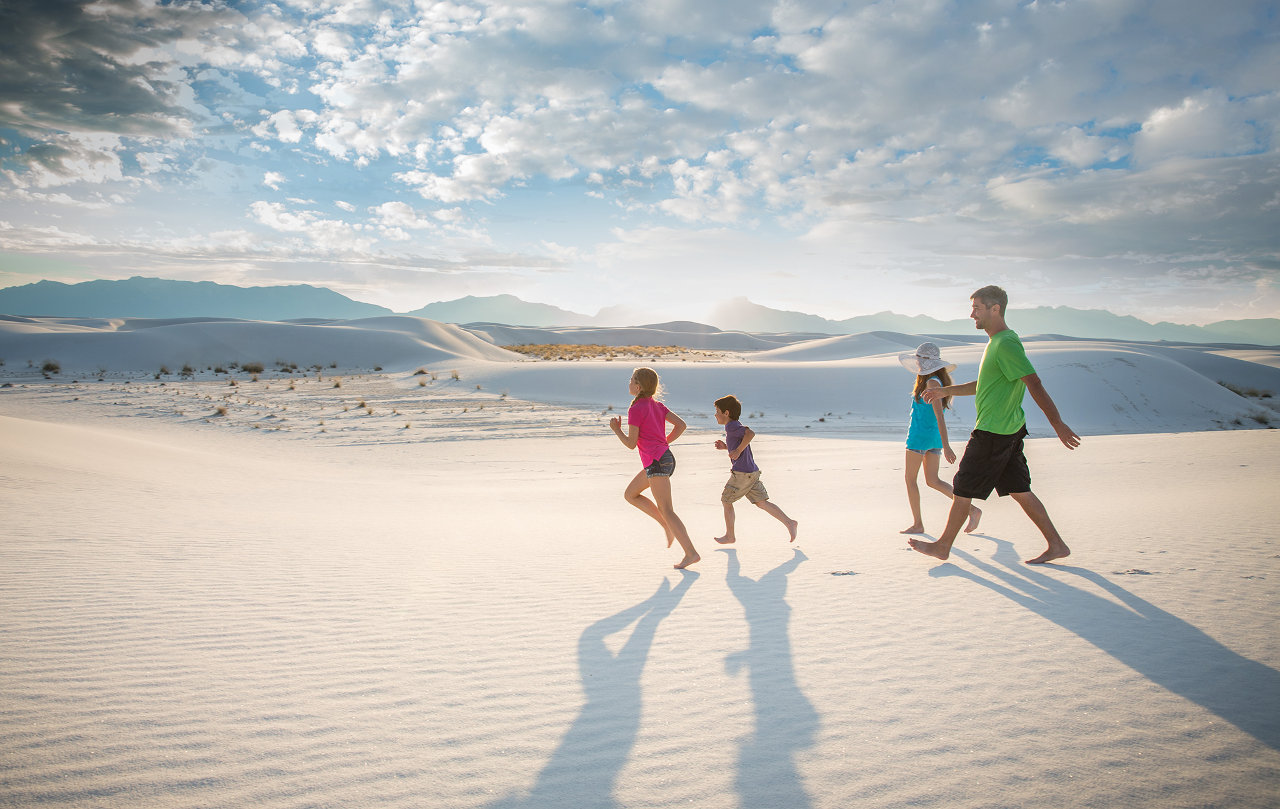
Photo courtesy of New Mexico Tourism
After you’ve spent several days up at Ski Apache racing down the slopes, you might feel in need of something just a bit different. If that’s the case, your best option is to head over to one of the most stunning landscapes in the state…perhaps the nation.
White Sands National Monument is a 30-minute drive southwest of Alamogordo. While it won’t be hot, it will certainly be warmer than in the mountains. The gleaming white gypsum sand dunes sit in a basin ringed by magnificent blue peaks. Give your sled a break from the snow and race it down the dunes instead.
6. Go on a multi-day backpacking trip.
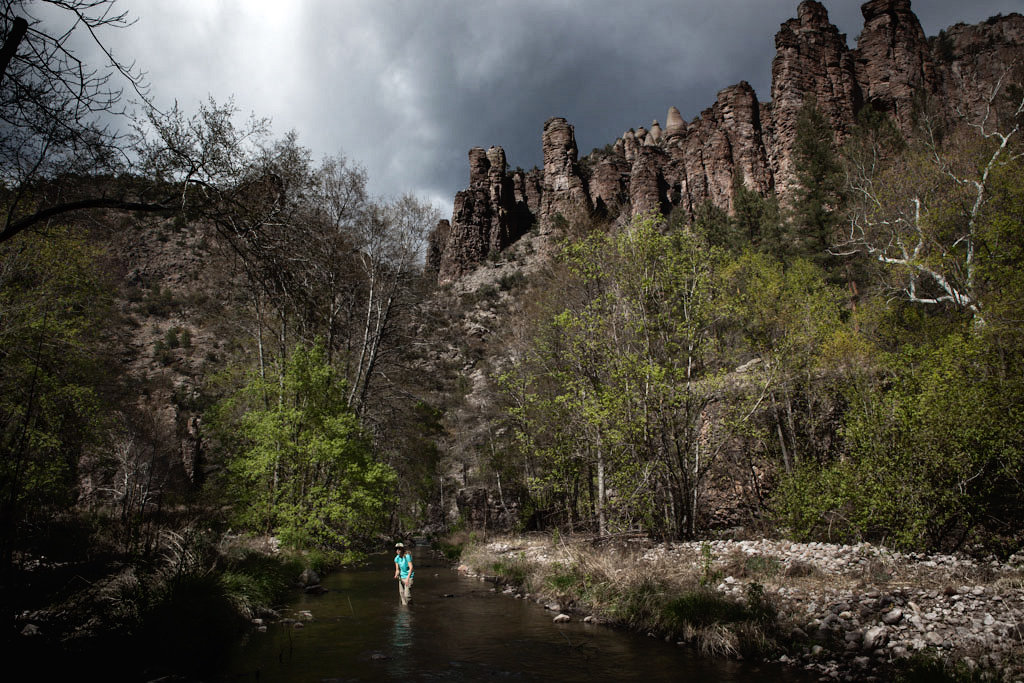
Photo courtesy of New Mexico Tourism
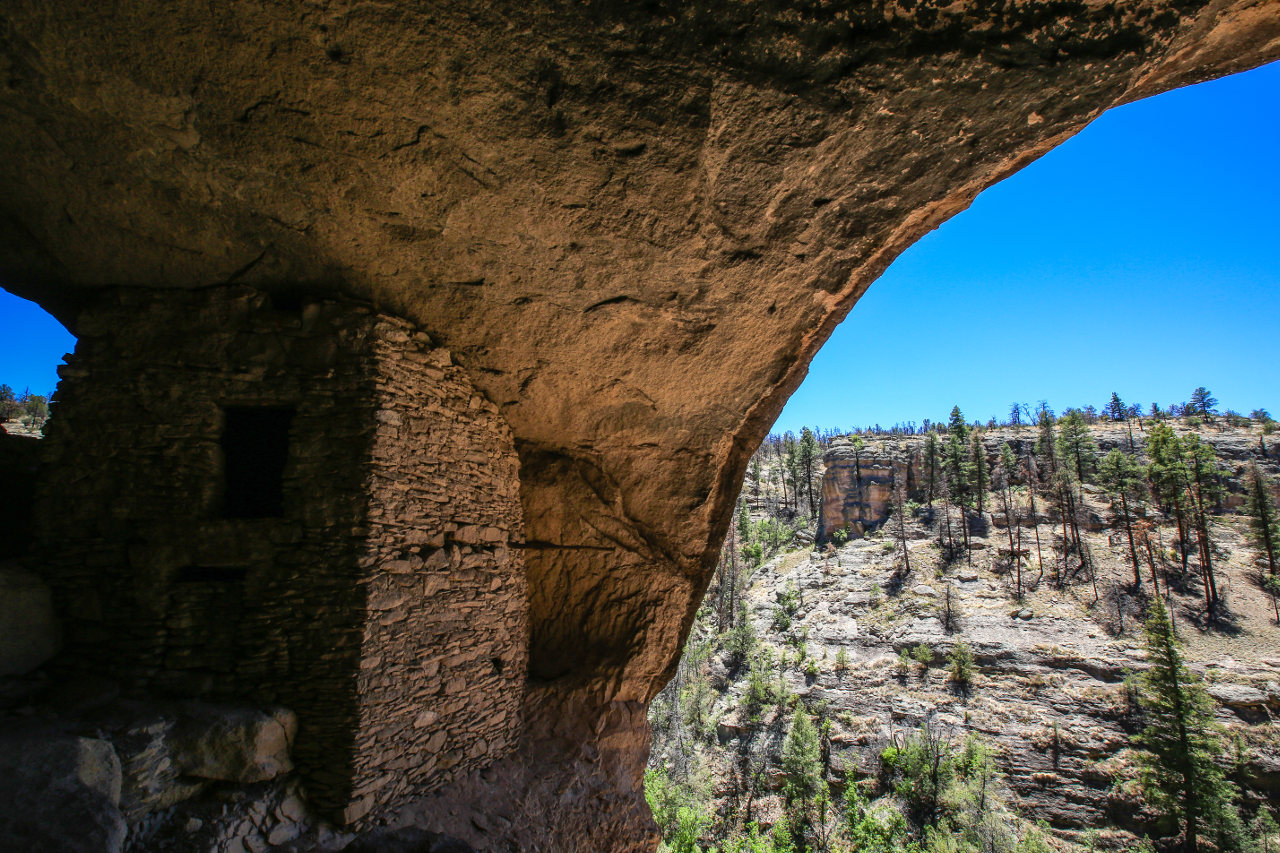
Photo courtesy of New Mexico Tourism
When the snow is dumping on the northern mountains, New Mexico’s diverse geography still offers the opportunity for a warm weather backpack trip. Enter the Gila Wilderness.
The Gila, the first designated wilderness area in the world, and one of the largest roadless areas in the US, is located in New Mexico’s southwest. A good backpacking option is the Gila Loop. Set off from Gila Cliff Dwellings National Monument and follow the trail as it climbs rapidly along the main stem of the Gila River. These narrow canyons are dressed in pines and home to mule deer, elk, and black bears. The number of birds, especially in the winter, is impressive.
The trail tops out on a grass-covered volcanic mesa that might very well be a bit chilly, but the views of southern New Mexico are worth pretty much any drop in temperature. Plan two days for the loop and bring plenty of water. Nights will be cold, so make sure to layer up.
7. Explore underground.
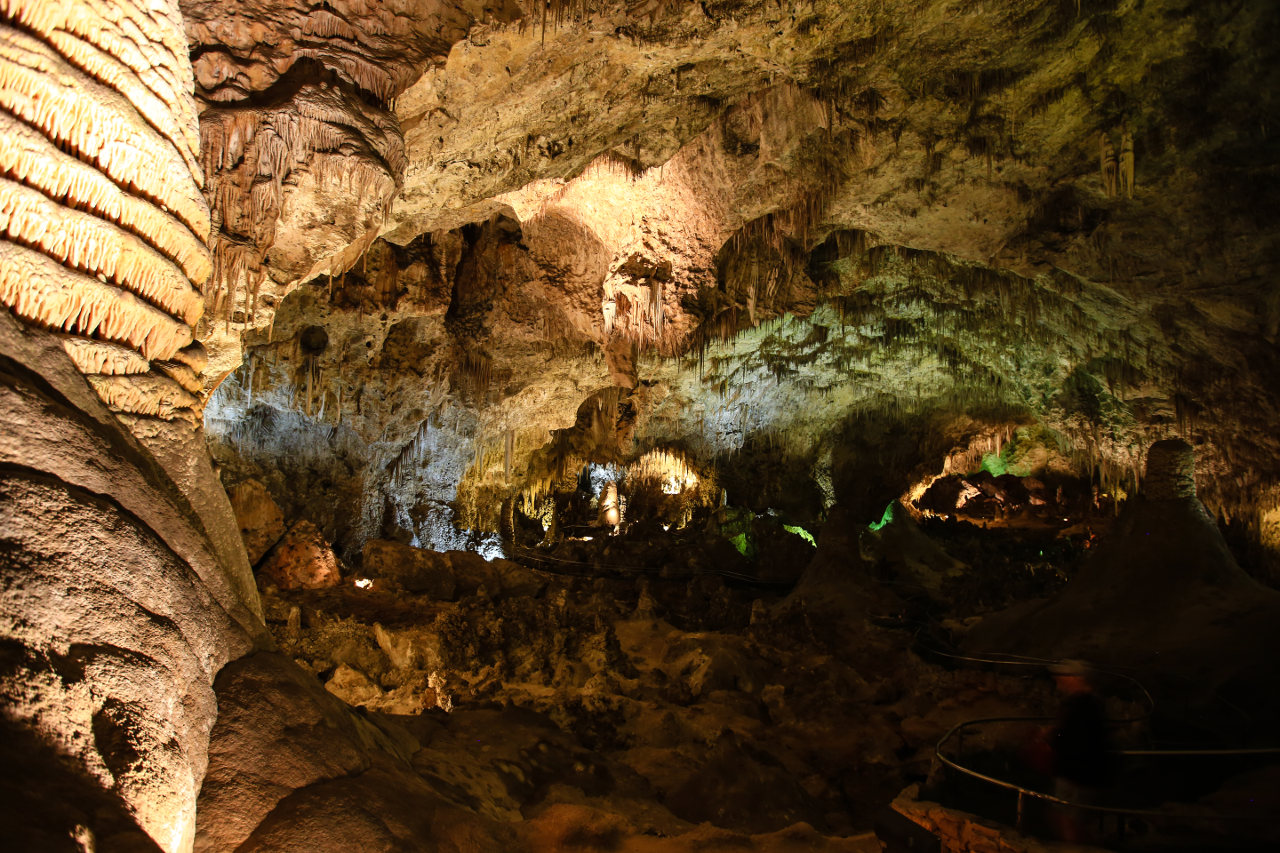
Photo courtesy of New Mexico Tourism
While you’re in the relative warmth of the south, visit Carlsbad Caverns National Park on the eastern side of the state, located within New Mexico’s section of the Chihuahuan Desert. The park is made up of about 120 different caves carved out of a 250-million-year-old fossil reef system (yes, eastern New Mexico used to be at the bottom of a shallow sea). There are actually over 300 caves in the system, but not all of them are accessible. About 15,000 years ago, humans began using the caves, leaving behind stone tools and pictographs. In the 1890s, a cowboy by the name of Jim White stumbled on the caverns and led explorations of the incredible limestone structures.
For your visit, check out the self-guided tour through the Big Room Chamber. There are also a number of ranger-led tours among the great stalactites and stalagmites of the caverns. King’s Palace is impressive. Slaughter Canyon’s Christmas-tree-like formation is astounding. But the Hall of the White Giant is probably my favorite.
8. Take a sunrise ride in a hot air balloon.
New Mexico is the hot air balloon capital of the entire planet, with the largest balloon festival in the world held here every October. Stable morning wind patterns make for a gentle and safe flight over the state’s river valleys, volcanic cones, and ancient plains.
If you’re in Albuquerque, you’ll float low over the waters of the Rio Grande and its thick riparian forest. Pueblo Balloons, in Taos, offers a champagne and coffee breakfast; you’ll get a different perspective on the Rio Grande here, as you dip into the 600ft river gorge to see otters play and bighorn sheep calmly watch you sail south with the morning breeze and the warming sunrise.

